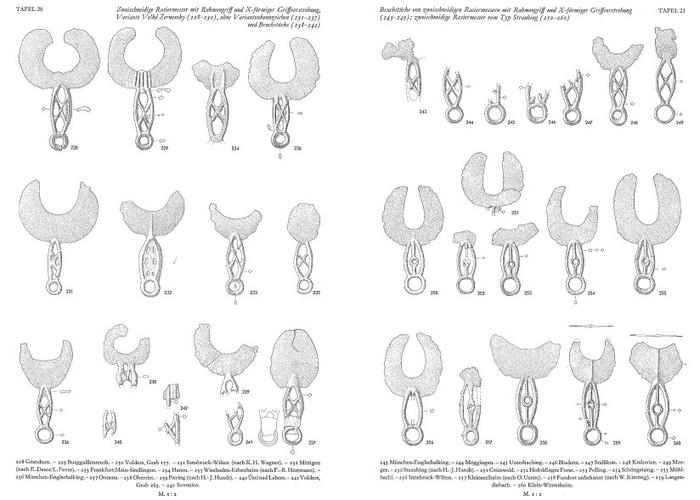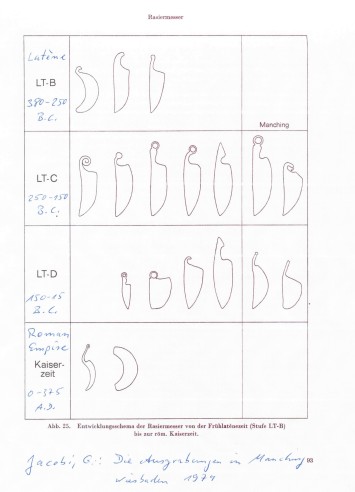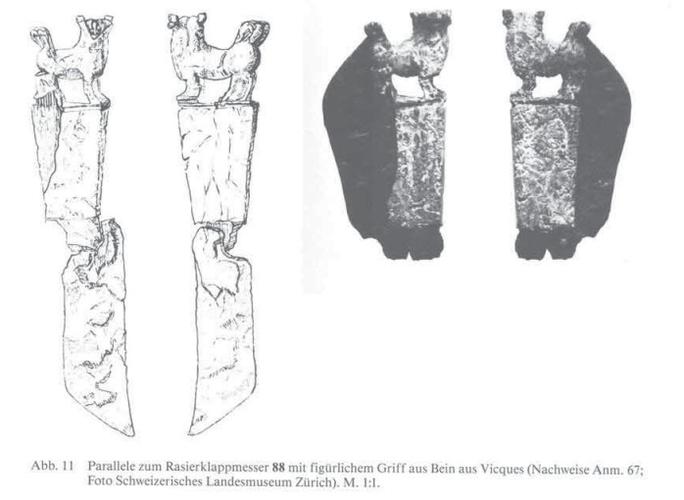Results 11 to 14 of 14
Thread: What hones for the pilgrims ?
-
11-29-2015, 01:02 PM #11

Of course they shaved! Razor blades were know from the stone age period on. During the bronze age one or tow sided razors made from bronze have been used. Also, in a lot of graves of the bronze age in Europe sharpening stones have been found as burial objects.
Here is a table with finds of bronze razors in middle europe (Taken from: Jockenhövel, A.: Die Rasiermesser in Mitteleuropa, München 1971)

So of course these people shaved and they also shaprened their razors (don't know if honing is a correct term in this context). Before the razors were sharpened on a stone, the blades have been beated out with a hammer on an anvil. The same procedure we know and do up today with scythes. This corrects bends and outbreaks in the blade edge and makes the edge thinner. But of course compared to what we understand of honing today, this was a real "rough sharpening". And I am absolutely sure, it wasn't a pleasure to shave in this old days.
The form of razors changed a lot in history and of course different cultures had different forms and shapes.
Here is an information that shows the development and variation in shape of razors in the Latène age (approx. 400 B.C. to 0) turning into the roman empire age.

During the roman times also a lot of different forms of razors had been established. It is a very interesting theme, but you can spend pages over pages on this. Maybe a theme for a different thread on the Straight razors site (if there don't exists already something comparable).Last edited by hatzicho; 11-29-2015 at 01:13 PM.
-
-
11-29-2015, 01:33 PM #12

At what point does the "modern" configuration appear (scales and blade...not blade shape)?
The easy road is rarely rewarding.
-
11-29-2015, 01:47 PM #13

Funny...i have known that you have something useful to add here Peter !! Thanks for the short trail on history....
███▓▒░░.RAZORLOVESTONES.░░▒▓███
-
11-29-2015, 02:04 PM #14

Well they have also been known from the roman ages on, maybe earlier. The following example was found in Augst/ Switzerland, the ancient roman city Augusta Raurica. It is a foldable knive, used as razor.

Taken from: Riha, E.: Römisches Toiletgerät und medizinische Instrumente aus Augst und Kaiseraugst, Augst 1986
-


 43Likes
43Likes LinkBack URL
LinkBack URL About LinkBacks
About LinkBacks







 Reply With Quote
Reply With Quote
